THE UNIVERSES OF THE LATIN AMERICAN GALLERIES IN ARCO
With strong gallery participation, ARCO is an interesting point to measure how the proposals reach the visitor and the collector. The choices based on aesthetic or commercial criteria create synergies that shape a fluid and sometimes circumstantial representation of each catalog. From Arte al Día, we delve into ten of those catalogs, expanded to variegated universes, monographs and dialogues that show a sample of the approach of Latin American galleries in their presence at the Madrid fair.
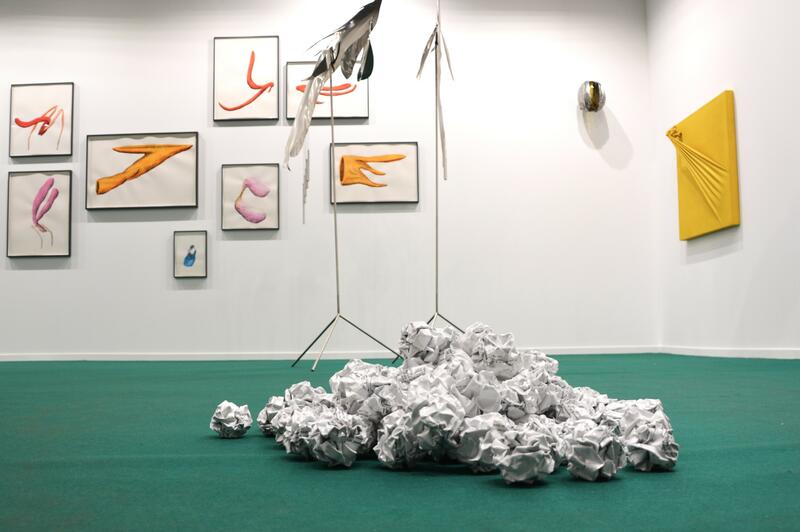
Marcelo Guarnieri reserves for ARCO a dialogue, in different degrees of voluntariness, but with the visible result, of works by Alice Shintani (São Paulo, Brazil, 1971) and LIUBA (b. Liuba Wolf, Sofia, Bulgaria, 1923 - São Paulo, Brazil, 2005), two worlds that, if they seem antagonistic at first sight, combine in the approximation of the use of geometries, accentuated by the concrete platforms arranged in the space that, in that conversation, highlight differences and similarities.
Another Brazilian artist that stands out in the tours is Porta Vilaseca, who with her precise production of balances between the universes of Kika Carvalho (Victoria, Brazil, 1992), pictorial, and Zé Carlos Garcia (Aracajú, Brazil, 1973), more oriented to the installation, although eminently sculptural, offer a gateway to a dreamlike yet subtly tense environment, shaped by the contrasting elements of both artists.
The Portuguese FOCO displays in its space an approach to the world of Francisco Trêpa (Lisbon, Portugal, 1995), a universe where his ceramic practices create dreamlike beings and environments, although with evident links to certain problems of the real world. The arrangement of the young Portuguese artist's works and the orderly, articulated and balanced dedication of his production in the space are allies to highlight the aesthetic qualities of his work.
Isla Flotante, participant in the program Profiles | Latin American Art, proposes the work of Mariela Scafati (Bahía Blanca, Argentina, 1973), and for them it uses the spatial criterion, as well as the need for the most appropriate approach for the exhibition of her work. The area occupied by her exhibition fits in what becomes enveloping, using the majority colors of the Argentinean artist's work to eradicate any distraction and in favor of the full integration of the visitor in Scafati's objectives.
Along the same monographic line, Gomide & Co. offers the great opportunity to delve into the figure of León Ferrari (Buenos Aires, Argentina, 1913 - ibidem, 2013) through a selection of works from some of his most representative periods. The São Paulo gallery judiciously arranges the impact of some of his most renowned and colorful productions in the foreground to draw the visitor’s attention to the depth of the Argentine master's work.
In the case of Mendes Wood DM, a gallery based in several cities, including São Paulo, it advocates the impact of the textile work of Sonia Gomes (Caetanópolis, Brazil, 1948), one of the precursors of the technique, which combines the verticality of her work with that of the more classical references in terms of format of the paintings of Carioca Laís Amaral (Rio de Janeiro, Brazil, 1993) and that of the rest of her bets for the fair, among which stand out the French Pol Taburet or the Belgian Bendt Eyckermans.
In the emergence of difference and how to conjugate it is the Mexican Mascota, a gallery whose list for ARCO does not include a Latin American presence, but that dynamizes, precisely for that reason, European and American bets that mark a certain variety in the look. Marie Hazard, Charlotte van der Borght, but, above all, Wyatt Kahn's or Yves Sherer's esthetic proposal, highlight the different artistic approaches, from the corporal register to the interaction of works apparently far from each other in every concept.
Among that eclectic bet, we also find Luciana Brito, a space that introduces Quimera, the renowned intervention by Regina Silveira (Porto Alegre, Brazil, 1939) and that presides over, or dominates the space with its commanding presence, works by renowned names of Latin American art. There coexist the sacks of Bosco Sodi (Mexico City, Mexico, 1970), the production of the last years of Waldemar Cordeiro (Rome, Italy, 1925 - São Paulo, Brazil, 1973) or prints by Caio Reisewitz (São Paulo, Brazil, 1967) that emerge to form a representative sample of that zone nourished by the masters.
Undoubtedly, the installation that Henrique Faría's space becomes in the program of galleries is another invitation to dive into Latin American art through his wide-ranging show. Variegated in diversity, the New York gallery promotes an expanded view of abstraction and conceptual art, building a didactic and almost museum-like room with Amazonian links to the proposals it holds in Watamisé, one of the fair's curated programs.
Travesía Cuatro, with venues both in Madrid and in Mexico's Guadalajara, advocates for the unification of space through the chromatic to give unity to a proposal as varied as it is distant that, however, and precisely because of the scene, maintains a certain conversation, bringing together diverse proposals that oscillate between the pictorial, the sculptural and even with the residual installation, and building a good visual catalog of its bet.
Related Topics
May interest you
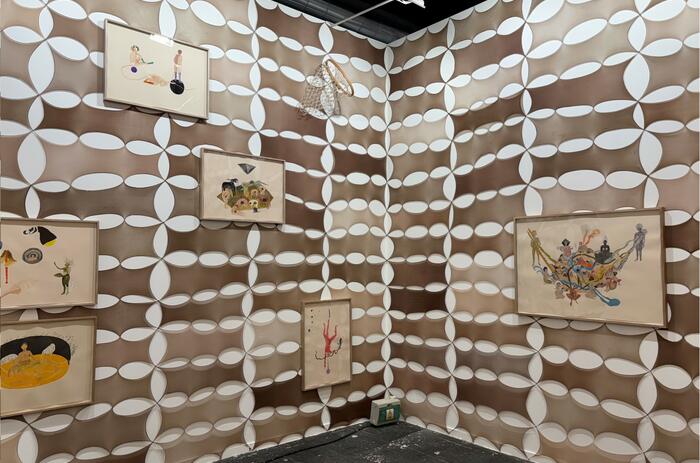
The Museo Nacional Centro de Arte Reina Sofía has announced the acquisitions made during the ARCO fair, through which both the institution and the Ministry of Culture expand the museum’s collections. Among the artists whose work is now part of the Madrid-based institution are Argentine artist Marta Minujín and Colombian artists Juan Pablo Echeverri and Luz Lizarazo—three figures with different career trajectories who bring a distinct Latin American perspective to a list of acquisitions largely focused on Spanish artists.
THE REINA SOFÍA ACQUIRES WORKS BY MINUJÍN, LIZARAZO AND ECHEVERRI AT ARCO FOR ITS COLLECTION
The Museo Nacional Centro de Arte Reina Sofía has announced the acquisitions made during the ARCO fair, through which both the institution and the Ministry of Culture expand the museum’s collections. Among the artists whose work is now part of the Madrid-based institution are Argentine artist Marta Minujín and Colombian artists Juan Pablo Echeverri and Luz Lizarazo—three figures with different career trajectories who bring a distinct Latin American perspective to a list of acquisitions largely focused on Spanish artists.

The Museo Nacional Centro de Arte Reina Sofía has announced the acquisitions made during the ARCO fair, through which both the institution and the Ministry of Culture expand the museum’s collections. Among the artists whose work is now part of the Madrid-based institution are Argentine artist Marta Minujín and Colombian artists Juan Pablo Echeverri and Luz Lizarazo—three figures with different career trajectories who bring a distinct Latin American perspective to a list of acquisitions largely focused on Spanish artists.
THE REINA SOFÍA ACQUIRES WORKS BY MINUJÍN, LIZARAZO AND ECHEVERRI AT ARCO FOR ITS COLLECTION
The Museo Nacional Centro de Arte Reina Sofía has announced the acquisitions made during the ARCO fair, through which both the institution and the Ministry of Culture expand the museum’s collections. Among the artists whose work is now part of the Madrid-based institution are Argentine artist Marta Minujín and Colombian artists Juan Pablo Echeverri and Luz Lizarazo—three figures with different career trajectories who bring a distinct Latin American perspective to a list of acquisitions largely focused on Spanish artists.
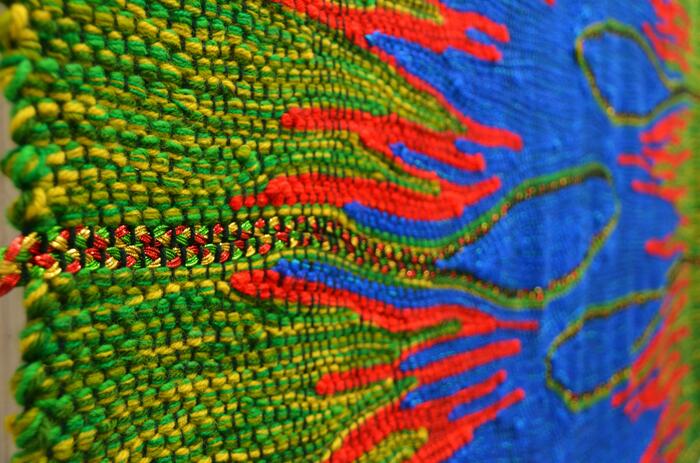
The Latin American presence at ARCO is consolidating year after year, establishing itself as a primary guiding thread beyond market trends, becoming a significant part of the identity of the Madrid fair. In this sense, the participating galleries in the various programs showcase well-established names as well as younger or more radical bets, shaping an ecosystem in which various productions can be analyzed.
ARCO 2025: DIFFERENT VIEWS ON LATIN AMERICA
The Latin American presence at ARCO is consolidating year after year, establishing itself as a primary guiding thread beyond market trends, becoming a significant part of the identity of the Madrid fair. In this sense, the participating galleries in the various programs showcase well-established names as well as younger or more radical bets, shaping an ecosystem in which various productions can be analyzed.
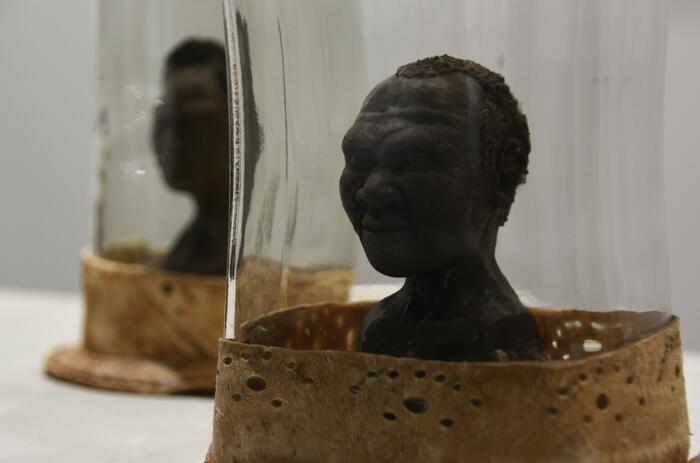
The organization has entrusted Mexican curator José Esparza Chong Cuy with the development of Perfiles | Arte latinoamericano, a curated journey that highlights, through ten selected figures, the diversity of visual approaches. As the curator himself states, it offers "a broad panorama of how to identify as artists and build community, proposing new ways of making, thinking, and living together."
THE LATIN AMERICAN GAZE IN ARCO’S “PROFILES” PROGRAM
The organization has entrusted Mexican curator José Esparza Chong Cuy with the development of Perfiles | Arte latinoamericano, a curated journey that highlights, through ten selected figures, the diversity of visual approaches. As the curator himself states, it offers "a broad panorama of how to identify as artists and build community, proposing new ways of making, thinking, and living together."
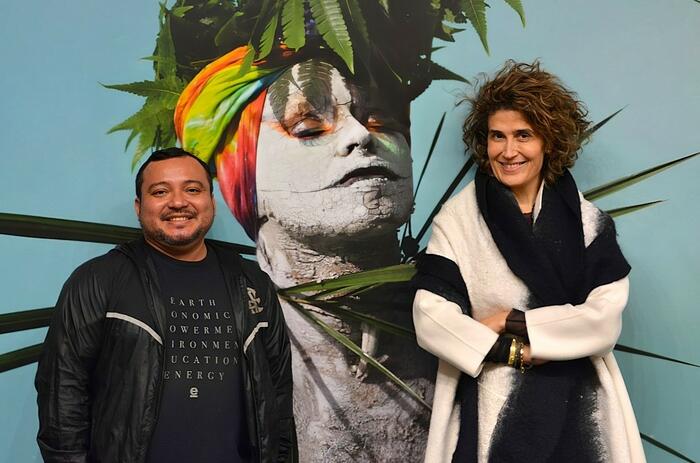
Maria Wills (Bogota, Colombia 1979) and Denilson Baniwa (Barcelos, Brazil, 1984) are the responsible for Wametisé: ideas for an amazofuturism, one of the special programs curated for ARCO 2025 and that navigates the Amazon and its growing impact on contemporary art. This proposal proposes a scenario of representation and dialogue through a selection of galleries and guest artists who will raise, through their works and their realities, the different conceptions of the Amazonian world and the possibilities of a collective future.
MARIA WILLS AND DENILSON BANIWA ON AMAZOFUTURISM
Maria Wills (Bogota, Colombia 1979) and Denilson Baniwa (Barcelos, Brazil, 1984) are the responsible for Wametisé: ideas for an amazofuturism, one of the special programs curated for ARCO 2025 and that navigates the Amazon and its growing impact on contemporary art. This proposal proposes a scenario of representation and dialogue through a selection of galleries and guest artists who will raise, through their works and their realities, the different conceptions of the Amazonian world and the possibilities of a collective future.

Madrid's Reina Sofia Museum, in collaboration with the Reina Sofia Museum Foundation, reinforces its growing involvement and strategy for the dissemination and study of Latin American contemporary art with the creation of the Cáder Institute of Central American Art (ICAC), dedicated to the research and dissemination of Central American art.
THE CENTRAL AMERICAN ART INSTITUTE (ICAC) OF THE REINA SOFIA MUSEUM IS BORN
Madrid's Reina Sofia Museum, in collaboration with the Reina Sofia Museum Foundation, reinforces its growing involvement and strategy for the dissemination and study of Latin American contemporary art with the creation of the Cáder Institute of Central American Art (ICAC), dedicated to the research and dissemination of Central American art.
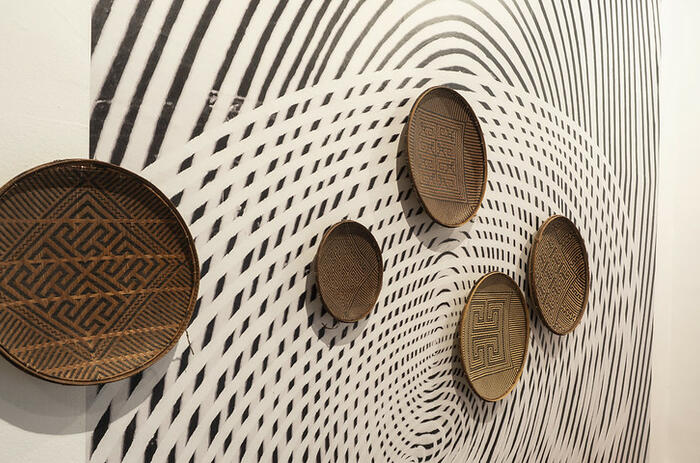
Casa de América, in Madrid, hosts Convergences / Divergences. Two Aesthetics in Dialogue, a complete exhibition curated by Ariel Jimenez in which Ye'kwana craftsmanship, a community of the Venezuelan Amazon rainforest, and modern and contemporary geometric abstraction, represented by more than a hundred works from the Juan Carlos Maldonado Collection, are in dialogue. The exhibition delves into the relationship between the different aesthetics developed contemporarily by both groups and, above all, highlights the reference to modern art movements and their partial debt to the techniques and motifs of the peoples of the Amazon.
DIALOGUE BETWEEN GEOMETRIC ABSTRACTION AND AMAZON AT CASA DE AMERICA
Casa de América, in Madrid, hosts Convergences / Divergences. Two Aesthetics in Dialogue, a complete exhibition curated by Ariel Jimenez in which Ye'kwana craftsmanship, a community of the Venezuelan Amazon rainforest, and modern and contemporary geometric abstraction, represented by more than a hundred works from the Juan Carlos Maldonado Collection, are in dialogue. The exhibition delves into the relationship between the different aesthetics developed contemporarily by both groups and, above all, highlights the reference to modern art movements and their partial debt to the techniques and motifs of the peoples of the Amazon.
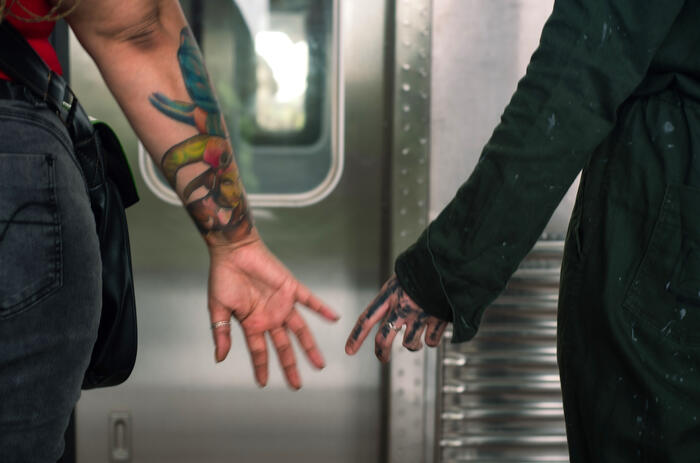
An exhibition that navigates the complex layers of womanhood, resilience, and the inherent solidarity forged through collective survival and the pursuit of safety in community, highlighting the invisible threads that connect women across different cultures.
“TEXT ME WHEN YOU GET HOME": MATRIARCHAL NARRATIVES OF RESISTANCE
An exhibition that navigates the complex layers of womanhood, resilience, and the inherent solidarity forged through collective survival and the pursuit of safety in community, highlighting the invisible threads that connect women across different cultures.

ARCOmadrid 2025 comes to an end with almost as many answers as questions. On the one hand, the concept of the fair—its commercial dimension—is now firmly established, marking a shift from the situation of a few years ago, when ARCO’s role as a meeting point for the general public seemed essential. This does not mean that attracting an audience with access to contemporary art is no longer part of its strategy, but rather that the fair now operates with a dual focus on two clearly defined lines of work: what and how. This shift consolidates the growing emphasis on collectors and institutions.
A CRITICAL OVERVIEW AT ARCO 2025
ARCOmadrid 2025 comes to an end with almost as many answers as questions. On the one hand, the concept of the fair—its commercial dimension—is now firmly established, marking a shift from the situation of a few years ago, when ARCO’s role as a meeting point for the general public seemed essential. This does not mean that attracting an audience with access to contemporary art is no longer part of its strategy, but rather that the fair now operates with a dual focus on two clearly defined lines of work: what and how. This shift consolidates the growing emphasis on collectors and institutions.

The Museo La Neomudéjar presents No hay más ciego que el que no quiere ver (No one is more blind than the one who refuses to see), a solo exhibition by Marisa Caichiolo (Santa Fe, Argentina, 1974). In this project, the artist explores and materializes pain and absence, primarily through embroidery. Drawing from her personal experiences, Caichiolo constructs narratives of resistance and instrumental memory to confront traumatic episodes—many of them rooted in forced disappearances.
THE SUBTLE EMBROIDERY OF PAIN BY MARISA CAICHIOLO AT LNM MUSEUM
The Museo La Neomudéjar presents No hay más ciego que el que no quiere ver (No one is more blind than the one who refuses to see), a solo exhibition by Marisa Caichiolo (Santa Fe, Argentina, 1974). In this project, the artist explores and materializes pain and absence, primarily through embroidery. Drawing from her personal experiences, Caichiolo constructs narratives of resistance and instrumental memory to confront traumatic episodes—many of them rooted in forced disappearances.
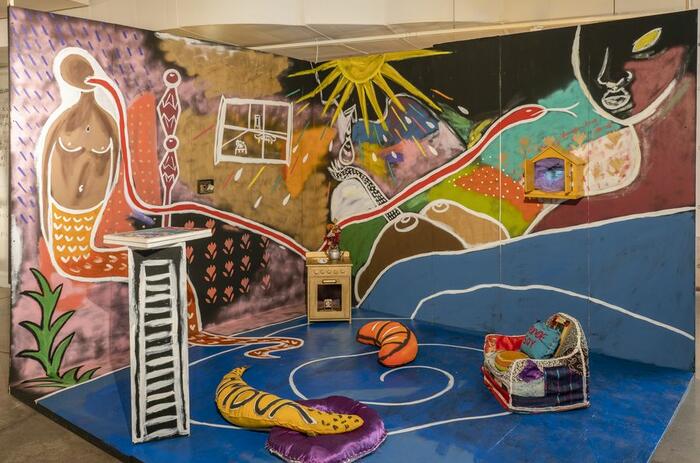
For 66 days, the exhibition will spread throughout the city, bringing together works by 76 artists from different regions of the world, focusing on exchanges between various social contexts and artistic languages as a way to explore the multiplicity of experiences between art and life.
THE 14TH MERCOSUR BIENNIAL: A CELEBRATION OF ARTISTIC DIVERSITY
For 66 days, the exhibition will spread throughout the city, bringing together works by 76 artists from different regions of the world, focusing on exchanges between various social contexts and artistic languages as a way to explore the multiplicity of experiences between art and life.
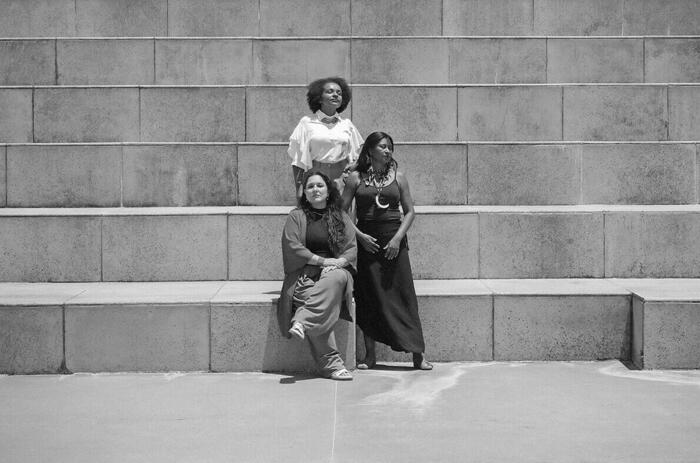
Sesc SP announced the fourth edition of Frestas—Triennial of Arts for the third quarter of 2025 at Sesc Sorocaba. This initiative is part of the institution’s extensive cultural agenda in the countryside of São Paulo State, aiming to expand access to cultural assets, strengthen local and regional partnerships, and foster the contemporary art scene in the region.
FRESTAS 2025: ART, TERRITORY AND DECOLONIAL DIALOGUES
Sesc SP announced the fourth edition of Frestas—Triennial of Arts for the third quarter of 2025 at Sesc Sorocaba. This initiative is part of the institution’s extensive cultural agenda in the countryside of São Paulo State, aiming to expand access to cultural assets, strengthen local and regional partnerships, and foster the contemporary art scene in the region.
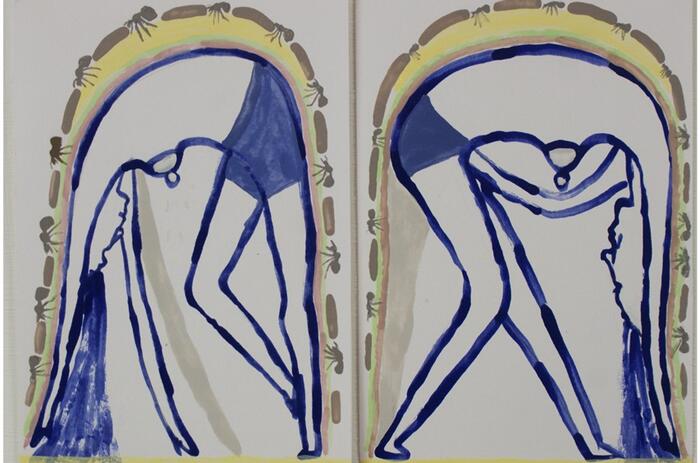
The exhibition brings together a group of eight artists whose work, though diverse in technique and approach, shares a common concern for social justice and historical memory.
ART AT CASA ESCUELA: MEMORY AND FEMALE RESISTANCE
The exhibition brings together a group of eight artists whose work, though diverse in technique and approach, shares a common concern for social justice and historical memory.

The Museo Nacional Centro de Arte Reina Sofía has announced the acquisitions made during the ARCO fair, through which both the institution and the Ministry of Culture expand the museum’s collections. Among the artists whose work is now part of the Madrid-based institution are Argentine artist Marta Minujín and Colombian artists Juan Pablo Echeverri and Luz Lizarazo—three figures with different career trajectories who bring a distinct Latin American perspective to a list of acquisitions largely focused on Spanish artists.
THE REINA SOFÍA ACQUIRES WORKS BY MINUJÍN, LIZARAZO AND ECHEVERRI AT ARCO FOR ITS COLLECTION
The Museo Nacional Centro de Arte Reina Sofía has announced the acquisitions made during the ARCO fair, through which both the institution and the Ministry of Culture expand the museum’s collections. Among the artists whose work is now part of the Madrid-based institution are Argentine artist Marta Minujín and Colombian artists Juan Pablo Echeverri and Luz Lizarazo—three figures with different career trajectories who bring a distinct Latin American perspective to a list of acquisitions largely focused on Spanish artists.

The Latin American presence at ARCO is consolidating year after year, establishing itself as a primary guiding thread beyond market trends, becoming a significant part of the identity of the Madrid fair. In this sense, the participating galleries in the various programs showcase well-established names as well as younger or more radical bets, shaping an ecosystem in which various productions can be analyzed.
ARCO 2025: DIFFERENT VIEWS ON LATIN AMERICA
The Latin American presence at ARCO is consolidating year after year, establishing itself as a primary guiding thread beyond market trends, becoming a significant part of the identity of the Madrid fair. In this sense, the participating galleries in the various programs showcase well-established names as well as younger or more radical bets, shaping an ecosystem in which various productions can be analyzed.

The organization has entrusted Mexican curator José Esparza Chong Cuy with the development of Perfiles | Arte latinoamericano, a curated journey that highlights, through ten selected figures, the diversity of visual approaches. As the curator himself states, it offers "a broad panorama of how to identify as artists and build community, proposing new ways of making, thinking, and living together."
THE LATIN AMERICAN GAZE IN ARCO’S “PROFILES” PROGRAM
The organization has entrusted Mexican curator José Esparza Chong Cuy with the development of Perfiles | Arte latinoamericano, a curated journey that highlights, through ten selected figures, the diversity of visual approaches. As the curator himself states, it offers "a broad panorama of how to identify as artists and build community, proposing new ways of making, thinking, and living together."

Maria Wills (Bogota, Colombia 1979) and Denilson Baniwa (Barcelos, Brazil, 1984) are the responsible for Wametisé: ideas for an amazofuturism, one of the special programs curated for ARCO 2025 and that navigates the Amazon and its growing impact on contemporary art. This proposal proposes a scenario of representation and dialogue through a selection of galleries and guest artists who will raise, through their works and their realities, the different conceptions of the Amazonian world and the possibilities of a collective future.
MARIA WILLS AND DENILSON BANIWA ON AMAZOFUTURISM
Maria Wills (Bogota, Colombia 1979) and Denilson Baniwa (Barcelos, Brazil, 1984) are the responsible for Wametisé: ideas for an amazofuturism, one of the special programs curated for ARCO 2025 and that navigates the Amazon and its growing impact on contemporary art. This proposal proposes a scenario of representation and dialogue through a selection of galleries and guest artists who will raise, through their works and their realities, the different conceptions of the Amazonian world and the possibilities of a collective future.

Madrid's Reina Sofia Museum, in collaboration with the Reina Sofia Museum Foundation, reinforces its growing involvement and strategy for the dissemination and study of Latin American contemporary art with the creation of the Cáder Institute of Central American Art (ICAC), dedicated to the research and dissemination of Central American art.
THE CENTRAL AMERICAN ART INSTITUTE (ICAC) OF THE REINA SOFIA MUSEUM IS BORN
Madrid's Reina Sofia Museum, in collaboration with the Reina Sofia Museum Foundation, reinforces its growing involvement and strategy for the dissemination and study of Latin American contemporary art with the creation of the Cáder Institute of Central American Art (ICAC), dedicated to the research and dissemination of Central American art.

Casa de América, in Madrid, hosts Convergences / Divergences. Two Aesthetics in Dialogue, a complete exhibition curated by Ariel Jimenez in which Ye'kwana craftsmanship, a community of the Venezuelan Amazon rainforest, and modern and contemporary geometric abstraction, represented by more than a hundred works from the Juan Carlos Maldonado Collection, are in dialogue. The exhibition delves into the relationship between the different aesthetics developed contemporarily by both groups and, above all, highlights the reference to modern art movements and their partial debt to the techniques and motifs of the peoples of the Amazon.
DIALOGUE BETWEEN GEOMETRIC ABSTRACTION AND AMAZON AT CASA DE AMERICA
Casa de América, in Madrid, hosts Convergences / Divergences. Two Aesthetics in Dialogue, a complete exhibition curated by Ariel Jimenez in which Ye'kwana craftsmanship, a community of the Venezuelan Amazon rainforest, and modern and contemporary geometric abstraction, represented by more than a hundred works from the Juan Carlos Maldonado Collection, are in dialogue. The exhibition delves into the relationship between the different aesthetics developed contemporarily by both groups and, above all, highlights the reference to modern art movements and their partial debt to the techniques and motifs of the peoples of the Amazon.

An exhibition that navigates the complex layers of womanhood, resilience, and the inherent solidarity forged through collective survival and the pursuit of safety in community, highlighting the invisible threads that connect women across different cultures.
“TEXT ME WHEN YOU GET HOME": MATRIARCHAL NARRATIVES OF RESISTANCE
An exhibition that navigates the complex layers of womanhood, resilience, and the inherent solidarity forged through collective survival and the pursuit of safety in community, highlighting the invisible threads that connect women across different cultures.

ARCOmadrid 2025 comes to an end with almost as many answers as questions. On the one hand, the concept of the fair—its commercial dimension—is now firmly established, marking a shift from the situation of a few years ago, when ARCO’s role as a meeting point for the general public seemed essential. This does not mean that attracting an audience with access to contemporary art is no longer part of its strategy, but rather that the fair now operates with a dual focus on two clearly defined lines of work: what and how. This shift consolidates the growing emphasis on collectors and institutions.
A CRITICAL OVERVIEW AT ARCO 2025
ARCOmadrid 2025 comes to an end with almost as many answers as questions. On the one hand, the concept of the fair—its commercial dimension—is now firmly established, marking a shift from the situation of a few years ago, when ARCO’s role as a meeting point for the general public seemed essential. This does not mean that attracting an audience with access to contemporary art is no longer part of its strategy, but rather that the fair now operates with a dual focus on two clearly defined lines of work: what and how. This shift consolidates the growing emphasis on collectors and institutions.

The Museo La Neomudéjar presents No hay más ciego que el que no quiere ver (No one is more blind than the one who refuses to see), a solo exhibition by Marisa Caichiolo (Santa Fe, Argentina, 1974). In this project, the artist explores and materializes pain and absence, primarily through embroidery. Drawing from her personal experiences, Caichiolo constructs narratives of resistance and instrumental memory to confront traumatic episodes—many of them rooted in forced disappearances.
THE SUBTLE EMBROIDERY OF PAIN BY MARISA CAICHIOLO AT LNM MUSEUM
The Museo La Neomudéjar presents No hay más ciego que el que no quiere ver (No one is more blind than the one who refuses to see), a solo exhibition by Marisa Caichiolo (Santa Fe, Argentina, 1974). In this project, the artist explores and materializes pain and absence, primarily through embroidery. Drawing from her personal experiences, Caichiolo constructs narratives of resistance and instrumental memory to confront traumatic episodes—many of them rooted in forced disappearances.

For 66 days, the exhibition will spread throughout the city, bringing together works by 76 artists from different regions of the world, focusing on exchanges between various social contexts and artistic languages as a way to explore the multiplicity of experiences between art and life.
THE 14TH MERCOSUR BIENNIAL: A CELEBRATION OF ARTISTIC DIVERSITY
For 66 days, the exhibition will spread throughout the city, bringing together works by 76 artists from different regions of the world, focusing on exchanges between various social contexts and artistic languages as a way to explore the multiplicity of experiences between art and life.

Sesc SP announced the fourth edition of Frestas—Triennial of Arts for the third quarter of 2025 at Sesc Sorocaba. This initiative is part of the institution’s extensive cultural agenda in the countryside of São Paulo State, aiming to expand access to cultural assets, strengthen local and regional partnerships, and foster the contemporary art scene in the region.
FRESTAS 2025: ART, TERRITORY AND DECOLONIAL DIALOGUES
Sesc SP announced the fourth edition of Frestas—Triennial of Arts for the third quarter of 2025 at Sesc Sorocaba. This initiative is part of the institution’s extensive cultural agenda in the countryside of São Paulo State, aiming to expand access to cultural assets, strengthen local and regional partnerships, and foster the contemporary art scene in the region.

The exhibition brings together a group of eight artists whose work, though diverse in technique and approach, shares a common concern for social justice and historical memory.
ART AT CASA ESCUELA: MEMORY AND FEMALE RESISTANCE
The exhibition brings together a group of eight artists whose work, though diverse in technique and approach, shares a common concern for social justice and historical memory.

The Museo Nacional Centro de Arte Reina Sofía has announced the acquisitions made during the ARCO fair, through which both the institution and the Ministry of Culture expand the museum’s collections. Among the artists whose work is now part of the Madrid-based institution are Argentine artist Marta Minujín and Colombian artists Juan Pablo Echeverri and Luz Lizarazo—three figures with different career trajectories who bring a distinct Latin American perspective to a list of acquisitions largely focused on Spanish artists.
THE REINA SOFÍA ACQUIRES WORKS BY MINUJÍN, LIZARAZO AND ECHEVERRI AT ARCO FOR ITS COLLECTION
The Museo Nacional Centro de Arte Reina Sofía has announced the acquisitions made during the ARCO fair, through which both the institution and the Ministry of Culture expand the museum’s collections. Among the artists whose work is now part of the Madrid-based institution are Argentine artist Marta Minujín and Colombian artists Juan Pablo Echeverri and Luz Lizarazo—three figures with different career trajectories who bring a distinct Latin American perspective to a list of acquisitions largely focused on Spanish artists.

The Latin American presence at ARCO is consolidating year after year, establishing itself as a primary guiding thread beyond market trends, becoming a significant part of the identity of the Madrid fair. In this sense, the participating galleries in the various programs showcase well-established names as well as younger or more radical bets, shaping an ecosystem in which various productions can be analyzed.
ARCO 2025: DIFFERENT VIEWS ON LATIN AMERICA
The Latin American presence at ARCO is consolidating year after year, establishing itself as a primary guiding thread beyond market trends, becoming a significant part of the identity of the Madrid fair. In this sense, the participating galleries in the various programs showcase well-established names as well as younger or more radical bets, shaping an ecosystem in which various productions can be analyzed.

The organization has entrusted Mexican curator José Esparza Chong Cuy with the development of Perfiles | Arte latinoamericano, a curated journey that highlights, through ten selected figures, the diversity of visual approaches. As the curator himself states, it offers "a broad panorama of how to identify as artists and build community, proposing new ways of making, thinking, and living together."
THE LATIN AMERICAN GAZE IN ARCO’S “PROFILES” PROGRAM
The organization has entrusted Mexican curator José Esparza Chong Cuy with the development of Perfiles | Arte latinoamericano, a curated journey that highlights, through ten selected figures, the diversity of visual approaches. As the curator himself states, it offers "a broad panorama of how to identify as artists and build community, proposing new ways of making, thinking, and living together."

Maria Wills (Bogota, Colombia 1979) and Denilson Baniwa (Barcelos, Brazil, 1984) are the responsible for Wametisé: ideas for an amazofuturism, one of the special programs curated for ARCO 2025 and that navigates the Amazon and its growing impact on contemporary art. This proposal proposes a scenario of representation and dialogue through a selection of galleries and guest artists who will raise, through their works and their realities, the different conceptions of the Amazonian world and the possibilities of a collective future.
MARIA WILLS AND DENILSON BANIWA ON AMAZOFUTURISM
Maria Wills (Bogota, Colombia 1979) and Denilson Baniwa (Barcelos, Brazil, 1984) are the responsible for Wametisé: ideas for an amazofuturism, one of the special programs curated for ARCO 2025 and that navigates the Amazon and its growing impact on contemporary art. This proposal proposes a scenario of representation and dialogue through a selection of galleries and guest artists who will raise, through their works and their realities, the different conceptions of the Amazonian world and the possibilities of a collective future.

Madrid's Reina Sofia Museum, in collaboration with the Reina Sofia Museum Foundation, reinforces its growing involvement and strategy for the dissemination and study of Latin American contemporary art with the creation of the Cáder Institute of Central American Art (ICAC), dedicated to the research and dissemination of Central American art.
THE CENTRAL AMERICAN ART INSTITUTE (ICAC) OF THE REINA SOFIA MUSEUM IS BORN
Madrid's Reina Sofia Museum, in collaboration with the Reina Sofia Museum Foundation, reinforces its growing involvement and strategy for the dissemination and study of Latin American contemporary art with the creation of the Cáder Institute of Central American Art (ICAC), dedicated to the research and dissemination of Central American art.

Casa de América, in Madrid, hosts Convergences / Divergences. Two Aesthetics in Dialogue, a complete exhibition curated by Ariel Jimenez in which Ye'kwana craftsmanship, a community of the Venezuelan Amazon rainforest, and modern and contemporary geometric abstraction, represented by more than a hundred works from the Juan Carlos Maldonado Collection, are in dialogue. The exhibition delves into the relationship between the different aesthetics developed contemporarily by both groups and, above all, highlights the reference to modern art movements and their partial debt to the techniques and motifs of the peoples of the Amazon.
DIALOGUE BETWEEN GEOMETRIC ABSTRACTION AND AMAZON AT CASA DE AMERICA
Casa de América, in Madrid, hosts Convergences / Divergences. Two Aesthetics in Dialogue, a complete exhibition curated by Ariel Jimenez in which Ye'kwana craftsmanship, a community of the Venezuelan Amazon rainforest, and modern and contemporary geometric abstraction, represented by more than a hundred works from the Juan Carlos Maldonado Collection, are in dialogue. The exhibition delves into the relationship between the different aesthetics developed contemporarily by both groups and, above all, highlights the reference to modern art movements and their partial debt to the techniques and motifs of the peoples of the Amazon.

An exhibition that navigates the complex layers of womanhood, resilience, and the inherent solidarity forged through collective survival and the pursuit of safety in community, highlighting the invisible threads that connect women across different cultures.
“TEXT ME WHEN YOU GET HOME": MATRIARCHAL NARRATIVES OF RESISTANCE
An exhibition that navigates the complex layers of womanhood, resilience, and the inherent solidarity forged through collective survival and the pursuit of safety in community, highlighting the invisible threads that connect women across different cultures.

ARCOmadrid 2025 comes to an end with almost as many answers as questions. On the one hand, the concept of the fair—its commercial dimension—is now firmly established, marking a shift from the situation of a few years ago, when ARCO’s role as a meeting point for the general public seemed essential. This does not mean that attracting an audience with access to contemporary art is no longer part of its strategy, but rather that the fair now operates with a dual focus on two clearly defined lines of work: what and how. This shift consolidates the growing emphasis on collectors and institutions.
A CRITICAL OVERVIEW AT ARCO 2025
ARCOmadrid 2025 comes to an end with almost as many answers as questions. On the one hand, the concept of the fair—its commercial dimension—is now firmly established, marking a shift from the situation of a few years ago, when ARCO’s role as a meeting point for the general public seemed essential. This does not mean that attracting an audience with access to contemporary art is no longer part of its strategy, but rather that the fair now operates with a dual focus on two clearly defined lines of work: what and how. This shift consolidates the growing emphasis on collectors and institutions.

The Museo La Neomudéjar presents No hay más ciego que el que no quiere ver (No one is more blind than the one who refuses to see), a solo exhibition by Marisa Caichiolo (Santa Fe, Argentina, 1974). In this project, the artist explores and materializes pain and absence, primarily through embroidery. Drawing from her personal experiences, Caichiolo constructs narratives of resistance and instrumental memory to confront traumatic episodes—many of them rooted in forced disappearances.
THE SUBTLE EMBROIDERY OF PAIN BY MARISA CAICHIOLO AT LNM MUSEUM
The Museo La Neomudéjar presents No hay más ciego que el que no quiere ver (No one is more blind than the one who refuses to see), a solo exhibition by Marisa Caichiolo (Santa Fe, Argentina, 1974). In this project, the artist explores and materializes pain and absence, primarily through embroidery. Drawing from her personal experiences, Caichiolo constructs narratives of resistance and instrumental memory to confront traumatic episodes—many of them rooted in forced disappearances.

For 66 days, the exhibition will spread throughout the city, bringing together works by 76 artists from different regions of the world, focusing on exchanges between various social contexts and artistic languages as a way to explore the multiplicity of experiences between art and life.
THE 14TH MERCOSUR BIENNIAL: A CELEBRATION OF ARTISTIC DIVERSITY
For 66 days, the exhibition will spread throughout the city, bringing together works by 76 artists from different regions of the world, focusing on exchanges between various social contexts and artistic languages as a way to explore the multiplicity of experiences between art and life.

Sesc SP announced the fourth edition of Frestas—Triennial of Arts for the third quarter of 2025 at Sesc Sorocaba. This initiative is part of the institution’s extensive cultural agenda in the countryside of São Paulo State, aiming to expand access to cultural assets, strengthen local and regional partnerships, and foster the contemporary art scene in the region.
FRESTAS 2025: ART, TERRITORY AND DECOLONIAL DIALOGUES
Sesc SP announced the fourth edition of Frestas—Triennial of Arts for the third quarter of 2025 at Sesc Sorocaba. This initiative is part of the institution’s extensive cultural agenda in the countryside of São Paulo State, aiming to expand access to cultural assets, strengthen local and regional partnerships, and foster the contemporary art scene in the region.

The exhibition brings together a group of eight artists whose work, though diverse in technique and approach, shares a common concern for social justice and historical memory.
ART AT CASA ESCUELA: MEMORY AND FEMALE RESISTANCE
The exhibition brings together a group of eight artists whose work, though diverse in technique and approach, shares a common concern for social justice and historical memory.

The Museo Nacional Centro de Arte Reina Sofía has announced the acquisitions made during the ARCO fair, through which both the institution and the Ministry of Culture expand the museum’s collections. Among the artists whose work is now part of the Madrid-based institution are Argentine artist Marta Minujín and Colombian artists Juan Pablo Echeverri and Luz Lizarazo—three figures with different career trajectories who bring a distinct Latin American perspective to a list of acquisitions largely focused on Spanish artists.
THE REINA SOFÍA ACQUIRES WORKS BY MINUJÍN, LIZARAZO AND ECHEVERRI AT ARCO FOR ITS COLLECTION
The Museo Nacional Centro de Arte Reina Sofía has announced the acquisitions made during the ARCO fair, through which both the institution and the Ministry of Culture expand the museum’s collections. Among the artists whose work is now part of the Madrid-based institution are Argentine artist Marta Minujín and Colombian artists Juan Pablo Echeverri and Luz Lizarazo—three figures with different career trajectories who bring a distinct Latin American perspective to a list of acquisitions largely focused on Spanish artists.

The Latin American presence at ARCO is consolidating year after year, establishing itself as a primary guiding thread beyond market trends, becoming a significant part of the identity of the Madrid fair. In this sense, the participating galleries in the various programs showcase well-established names as well as younger or more radical bets, shaping an ecosystem in which various productions can be analyzed.
ARCO 2025: DIFFERENT VIEWS ON LATIN AMERICA
The Latin American presence at ARCO is consolidating year after year, establishing itself as a primary guiding thread beyond market trends, becoming a significant part of the identity of the Madrid fair. In this sense, the participating galleries in the various programs showcase well-established names as well as younger or more radical bets, shaping an ecosystem in which various productions can be analyzed.

The organization has entrusted Mexican curator José Esparza Chong Cuy with the development of Perfiles | Arte latinoamericano, a curated journey that highlights, through ten selected figures, the diversity of visual approaches. As the curator himself states, it offers "a broad panorama of how to identify as artists and build community, proposing new ways of making, thinking, and living together."
THE LATIN AMERICAN GAZE IN ARCO’S “PROFILES” PROGRAM
The organization has entrusted Mexican curator José Esparza Chong Cuy with the development of Perfiles | Arte latinoamericano, a curated journey that highlights, through ten selected figures, the diversity of visual approaches. As the curator himself states, it offers "a broad panorama of how to identify as artists and build community, proposing new ways of making, thinking, and living together."

Maria Wills (Bogota, Colombia 1979) and Denilson Baniwa (Barcelos, Brazil, 1984) are the responsible for Wametisé: ideas for an amazofuturism, one of the special programs curated for ARCO 2025 and that navigates the Amazon and its growing impact on contemporary art. This proposal proposes a scenario of representation and dialogue through a selection of galleries and guest artists who will raise, through their works and their realities, the different conceptions of the Amazonian world and the possibilities of a collective future.
MARIA WILLS AND DENILSON BANIWA ON AMAZOFUTURISM
Maria Wills (Bogota, Colombia 1979) and Denilson Baniwa (Barcelos, Brazil, 1984) are the responsible for Wametisé: ideas for an amazofuturism, one of the special programs curated for ARCO 2025 and that navigates the Amazon and its growing impact on contemporary art. This proposal proposes a scenario of representation and dialogue through a selection of galleries and guest artists who will raise, through their works and their realities, the different conceptions of the Amazonian world and the possibilities of a collective future.

Madrid's Reina Sofia Museum, in collaboration with the Reina Sofia Museum Foundation, reinforces its growing involvement and strategy for the dissemination and study of Latin American contemporary art with the creation of the Cáder Institute of Central American Art (ICAC), dedicated to the research and dissemination of Central American art.
THE CENTRAL AMERICAN ART INSTITUTE (ICAC) OF THE REINA SOFIA MUSEUM IS BORN
Madrid's Reina Sofia Museum, in collaboration with the Reina Sofia Museum Foundation, reinforces its growing involvement and strategy for the dissemination and study of Latin American contemporary art with the creation of the Cáder Institute of Central American Art (ICAC), dedicated to the research and dissemination of Central American art.

Casa de América, in Madrid, hosts Convergences / Divergences. Two Aesthetics in Dialogue, a complete exhibition curated by Ariel Jimenez in which Ye'kwana craftsmanship, a community of the Venezuelan Amazon rainforest, and modern and contemporary geometric abstraction, represented by more than a hundred works from the Juan Carlos Maldonado Collection, are in dialogue. The exhibition delves into the relationship between the different aesthetics developed contemporarily by both groups and, above all, highlights the reference to modern art movements and their partial debt to the techniques and motifs of the peoples of the Amazon.
DIALOGUE BETWEEN GEOMETRIC ABSTRACTION AND AMAZON AT CASA DE AMERICA
Casa de América, in Madrid, hosts Convergences / Divergences. Two Aesthetics in Dialogue, a complete exhibition curated by Ariel Jimenez in which Ye'kwana craftsmanship, a community of the Venezuelan Amazon rainforest, and modern and contemporary geometric abstraction, represented by more than a hundred works from the Juan Carlos Maldonado Collection, are in dialogue. The exhibition delves into the relationship between the different aesthetics developed contemporarily by both groups and, above all, highlights the reference to modern art movements and their partial debt to the techniques and motifs of the peoples of the Amazon.

An exhibition that navigates the complex layers of womanhood, resilience, and the inherent solidarity forged through collective survival and the pursuit of safety in community, highlighting the invisible threads that connect women across different cultures.
“TEXT ME WHEN YOU GET HOME": MATRIARCHAL NARRATIVES OF RESISTANCE
An exhibition that navigates the complex layers of womanhood, resilience, and the inherent solidarity forged through collective survival and the pursuit of safety in community, highlighting the invisible threads that connect women across different cultures.

ARCOmadrid 2025 comes to an end with almost as many answers as questions. On the one hand, the concept of the fair—its commercial dimension—is now firmly established, marking a shift from the situation of a few years ago, when ARCO’s role as a meeting point for the general public seemed essential. This does not mean that attracting an audience with access to contemporary art is no longer part of its strategy, but rather that the fair now operates with a dual focus on two clearly defined lines of work: what and how. This shift consolidates the growing emphasis on collectors and institutions.
A CRITICAL OVERVIEW AT ARCO 2025
ARCOmadrid 2025 comes to an end with almost as many answers as questions. On the one hand, the concept of the fair—its commercial dimension—is now firmly established, marking a shift from the situation of a few years ago, when ARCO’s role as a meeting point for the general public seemed essential. This does not mean that attracting an audience with access to contemporary art is no longer part of its strategy, but rather that the fair now operates with a dual focus on two clearly defined lines of work: what and how. This shift consolidates the growing emphasis on collectors and institutions.

The Museo La Neomudéjar presents No hay más ciego que el que no quiere ver (No one is more blind than the one who refuses to see), a solo exhibition by Marisa Caichiolo (Santa Fe, Argentina, 1974). In this project, the artist explores and materializes pain and absence, primarily through embroidery. Drawing from her personal experiences, Caichiolo constructs narratives of resistance and instrumental memory to confront traumatic episodes—many of them rooted in forced disappearances.
THE SUBTLE EMBROIDERY OF PAIN BY MARISA CAICHIOLO AT LNM MUSEUM
The Museo La Neomudéjar presents No hay más ciego que el que no quiere ver (No one is more blind than the one who refuses to see), a solo exhibition by Marisa Caichiolo (Santa Fe, Argentina, 1974). In this project, the artist explores and materializes pain and absence, primarily through embroidery. Drawing from her personal experiences, Caichiolo constructs narratives of resistance and instrumental memory to confront traumatic episodes—many of them rooted in forced disappearances.

For 66 days, the exhibition will spread throughout the city, bringing together works by 76 artists from different regions of the world, focusing on exchanges between various social contexts and artistic languages as a way to explore the multiplicity of experiences between art and life.
THE 14TH MERCOSUR BIENNIAL: A CELEBRATION OF ARTISTIC DIVERSITY
For 66 days, the exhibition will spread throughout the city, bringing together works by 76 artists from different regions of the world, focusing on exchanges between various social contexts and artistic languages as a way to explore the multiplicity of experiences between art and life.

Sesc SP announced the fourth edition of Frestas—Triennial of Arts for the third quarter of 2025 at Sesc Sorocaba. This initiative is part of the institution’s extensive cultural agenda in the countryside of São Paulo State, aiming to expand access to cultural assets, strengthen local and regional partnerships, and foster the contemporary art scene in the region.
FRESTAS 2025: ART, TERRITORY AND DECOLONIAL DIALOGUES
Sesc SP announced the fourth edition of Frestas—Triennial of Arts for the third quarter of 2025 at Sesc Sorocaba. This initiative is part of the institution’s extensive cultural agenda in the countryside of São Paulo State, aiming to expand access to cultural assets, strengthen local and regional partnerships, and foster the contemporary art scene in the region.

The exhibition brings together a group of eight artists whose work, though diverse in technique and approach, shares a common concern for social justice and historical memory.
ART AT CASA ESCUELA: MEMORY AND FEMALE RESISTANCE
The exhibition brings together a group of eight artists whose work, though diverse in technique and approach, shares a common concern for social justice and historical memory.

The Museo Nacional Centro de Arte Reina Sofía has announced the acquisitions made during the ARCO fair, through which both the institution and the Ministry of Culture expand the museum’s collections. Among the artists whose work is now part of the Madrid-based institution are Argentine artist Marta Minujín and Colombian artists Juan Pablo Echeverri and Luz Lizarazo—three figures with different career trajectories who bring a distinct Latin American perspective to a list of acquisitions largely focused on Spanish artists.
THE REINA SOFÍA ACQUIRES WORKS BY MINUJÍN, LIZARAZO AND ECHEVERRI AT ARCO FOR ITS COLLECTION
The Museo Nacional Centro de Arte Reina Sofía has announced the acquisitions made during the ARCO fair, through which both the institution and the Ministry of Culture expand the museum’s collections. Among the artists whose work is now part of the Madrid-based institution are Argentine artist Marta Minujín and Colombian artists Juan Pablo Echeverri and Luz Lizarazo—three figures with different career trajectories who bring a distinct Latin American perspective to a list of acquisitions largely focused on Spanish artists.

The Latin American presence at ARCO is consolidating year after year, establishing itself as a primary guiding thread beyond market trends, becoming a significant part of the identity of the Madrid fair. In this sense, the participating galleries in the various programs showcase well-established names as well as younger or more radical bets, shaping an ecosystem in which various productions can be analyzed.
ARCO 2025: DIFFERENT VIEWS ON LATIN AMERICA
The Latin American presence at ARCO is consolidating year after year, establishing itself as a primary guiding thread beyond market trends, becoming a significant part of the identity of the Madrid fair. In this sense, the participating galleries in the various programs showcase well-established names as well as younger or more radical bets, shaping an ecosystem in which various productions can be analyzed.

The organization has entrusted Mexican curator José Esparza Chong Cuy with the development of Perfiles | Arte latinoamericano, a curated journey that highlights, through ten selected figures, the diversity of visual approaches. As the curator himself states, it offers "a broad panorama of how to identify as artists and build community, proposing new ways of making, thinking, and living together."
THE LATIN AMERICAN GAZE IN ARCO’S “PROFILES” PROGRAM
The organization has entrusted Mexican curator José Esparza Chong Cuy with the development of Perfiles | Arte latinoamericano, a curated journey that highlights, through ten selected figures, the diversity of visual approaches. As the curator himself states, it offers "a broad panorama of how to identify as artists and build community, proposing new ways of making, thinking, and living together."

Maria Wills (Bogota, Colombia 1979) and Denilson Baniwa (Barcelos, Brazil, 1984) are the responsible for Wametisé: ideas for an amazofuturism, one of the special programs curated for ARCO 2025 and that navigates the Amazon and its growing impact on contemporary art. This proposal proposes a scenario of representation and dialogue through a selection of galleries and guest artists who will raise, through their works and their realities, the different conceptions of the Amazonian world and the possibilities of a collective future.
MARIA WILLS AND DENILSON BANIWA ON AMAZOFUTURISM
Maria Wills (Bogota, Colombia 1979) and Denilson Baniwa (Barcelos, Brazil, 1984) are the responsible for Wametisé: ideas for an amazofuturism, one of the special programs curated for ARCO 2025 and that navigates the Amazon and its growing impact on contemporary art. This proposal proposes a scenario of representation and dialogue through a selection of galleries and guest artists who will raise, through their works and their realities, the different conceptions of the Amazonian world and the possibilities of a collective future.

Madrid's Reina Sofia Museum, in collaboration with the Reina Sofia Museum Foundation, reinforces its growing involvement and strategy for the dissemination and study of Latin American contemporary art with the creation of the Cáder Institute of Central American Art (ICAC), dedicated to the research and dissemination of Central American art.
THE CENTRAL AMERICAN ART INSTITUTE (ICAC) OF THE REINA SOFIA MUSEUM IS BORN
Madrid's Reina Sofia Museum, in collaboration with the Reina Sofia Museum Foundation, reinforces its growing involvement and strategy for the dissemination and study of Latin American contemporary art with the creation of the Cáder Institute of Central American Art (ICAC), dedicated to the research and dissemination of Central American art.

Casa de América, in Madrid, hosts Convergences / Divergences. Two Aesthetics in Dialogue, a complete exhibition curated by Ariel Jimenez in which Ye'kwana craftsmanship, a community of the Venezuelan Amazon rainforest, and modern and contemporary geometric abstraction, represented by more than a hundred works from the Juan Carlos Maldonado Collection, are in dialogue. The exhibition delves into the relationship between the different aesthetics developed contemporarily by both groups and, above all, highlights the reference to modern art movements and their partial debt to the techniques and motifs of the peoples of the Amazon.
DIALOGUE BETWEEN GEOMETRIC ABSTRACTION AND AMAZON AT CASA DE AMERICA
Casa de América, in Madrid, hosts Convergences / Divergences. Two Aesthetics in Dialogue, a complete exhibition curated by Ariel Jimenez in which Ye'kwana craftsmanship, a community of the Venezuelan Amazon rainforest, and modern and contemporary geometric abstraction, represented by more than a hundred works from the Juan Carlos Maldonado Collection, are in dialogue. The exhibition delves into the relationship between the different aesthetics developed contemporarily by both groups and, above all, highlights the reference to modern art movements and their partial debt to the techniques and motifs of the peoples of the Amazon.

An exhibition that navigates the complex layers of womanhood, resilience, and the inherent solidarity forged through collective survival and the pursuit of safety in community, highlighting the invisible threads that connect women across different cultures.
“TEXT ME WHEN YOU GET HOME": MATRIARCHAL NARRATIVES OF RESISTANCE
An exhibition that navigates the complex layers of womanhood, resilience, and the inherent solidarity forged through collective survival and the pursuit of safety in community, highlighting the invisible threads that connect women across different cultures.

ARCOmadrid 2025 comes to an end with almost as many answers as questions. On the one hand, the concept of the fair—its commercial dimension—is now firmly established, marking a shift from the situation of a few years ago, when ARCO’s role as a meeting point for the general public seemed essential. This does not mean that attracting an audience with access to contemporary art is no longer part of its strategy, but rather that the fair now operates with a dual focus on two clearly defined lines of work: what and how. This shift consolidates the growing emphasis on collectors and institutions.
A CRITICAL OVERVIEW AT ARCO 2025
ARCOmadrid 2025 comes to an end with almost as many answers as questions. On the one hand, the concept of the fair—its commercial dimension—is now firmly established, marking a shift from the situation of a few years ago, when ARCO’s role as a meeting point for the general public seemed essential. This does not mean that attracting an audience with access to contemporary art is no longer part of its strategy, but rather that the fair now operates with a dual focus on two clearly defined lines of work: what and how. This shift consolidates the growing emphasis on collectors and institutions.

The Museo La Neomudéjar presents No hay más ciego que el que no quiere ver (No one is more blind than the one who refuses to see), a solo exhibition by Marisa Caichiolo (Santa Fe, Argentina, 1974). In this project, the artist explores and materializes pain and absence, primarily through embroidery. Drawing from her personal experiences, Caichiolo constructs narratives of resistance and instrumental memory to confront traumatic episodes—many of them rooted in forced disappearances.
THE SUBTLE EMBROIDERY OF PAIN BY MARISA CAICHIOLO AT LNM MUSEUM
The Museo La Neomudéjar presents No hay más ciego que el que no quiere ver (No one is more blind than the one who refuses to see), a solo exhibition by Marisa Caichiolo (Santa Fe, Argentina, 1974). In this project, the artist explores and materializes pain and absence, primarily through embroidery. Drawing from her personal experiences, Caichiolo constructs narratives of resistance and instrumental memory to confront traumatic episodes—many of them rooted in forced disappearances.

For 66 days, the exhibition will spread throughout the city, bringing together works by 76 artists from different regions of the world, focusing on exchanges between various social contexts and artistic languages as a way to explore the multiplicity of experiences between art and life.
THE 14TH MERCOSUR BIENNIAL: A CELEBRATION OF ARTISTIC DIVERSITY
For 66 days, the exhibition will spread throughout the city, bringing together works by 76 artists from different regions of the world, focusing on exchanges between various social contexts and artistic languages as a way to explore the multiplicity of experiences between art and life.

Sesc SP announced the fourth edition of Frestas—Triennial of Arts for the third quarter of 2025 at Sesc Sorocaba. This initiative is part of the institution’s extensive cultural agenda in the countryside of São Paulo State, aiming to expand access to cultural assets, strengthen local and regional partnerships, and foster the contemporary art scene in the region.
FRESTAS 2025: ART, TERRITORY AND DECOLONIAL DIALOGUES
Sesc SP announced the fourth edition of Frestas—Triennial of Arts for the third quarter of 2025 at Sesc Sorocaba. This initiative is part of the institution’s extensive cultural agenda in the countryside of São Paulo State, aiming to expand access to cultural assets, strengthen local and regional partnerships, and foster the contemporary art scene in the region.

The exhibition brings together a group of eight artists whose work, though diverse in technique and approach, shares a common concern for social justice and historical memory.
ART AT CASA ESCUELA: MEMORY AND FEMALE RESISTANCE
The exhibition brings together a group of eight artists whose work, though diverse in technique and approach, shares a common concern for social justice and historical memory.


